DnD Druid 5e class guide

The DnD Druid 5e class is as versatile as the natural forces it commands. A living conduit for flora and fauna, a Druid can be a powerhouse of melee damage, crowd control, healing, or support. They can also be (and befriend) almost any animal in Dungeons and Dragons – which is even more reason to try playing one. This guide covers the core rules and top build tips for the Dungeons and Dragons Druid.
For more on DnD classes in general, head to our dedicated guide, where you can compare the Druid’s abilities to its adventuring peers. Or, if you want to dive into your Druid build, here’s all you’ll need to know about DnD races and DnD 2024 backgrounds.
DnD Druid 5e class guide:
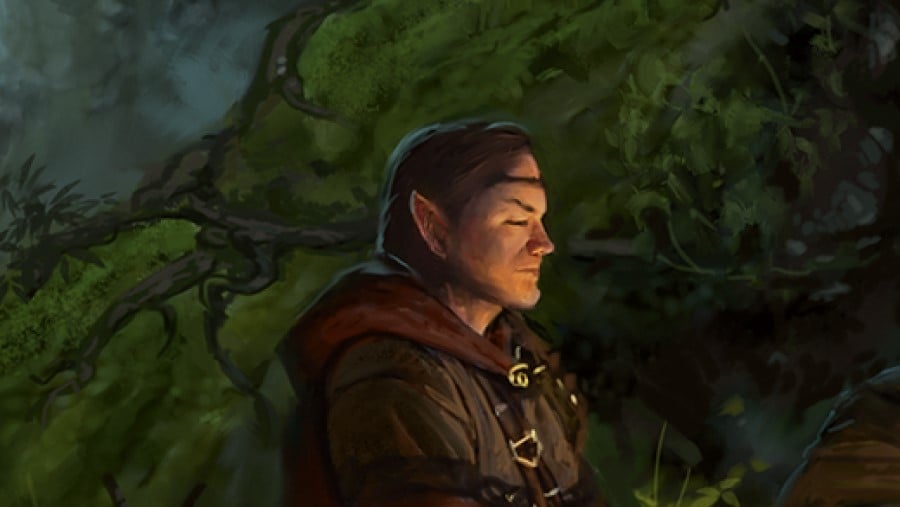
Class features
Starting proficiencies
| Primary ability | Wisdom |
| Hit die | 1d8 per Druid level |
| Saving throws | Intelligence, Wisdom |
| Skills | Choose two from: Animal Handling, Arcana, Insight, Medicine, Nature, Perception, Religion, or Survival |
| Weapons | Simple weapons |
| Tools | Herbalism Kit |
| Armor | Light armor, shields |
A Druid starts their adventuring career with 50 GP or the following equipment: Leather Armor, Shield, Druidic Focus (Quarterstaff), Sickle, Explorer’s Pack, Herbalism Kit, and 9 GP.
Spellcasting
Druids are Wisdom-based ‘full caster’ characters, so they get two cantrips and two level-one spell slots from the get-go. You can swap your cantrips whenever you gain a DnD level up, and your spells can be changed around on a long rest.
We’ll cover the best Druid spells to choose further down in this guide.
Druidic
Druidic is a secret language known only to this class. You’ll learn this at level one, and from here on out, you’ll always have the spell Speak With Animals prepared. This gives you some unique utility if your DnD campaign features lots of animals or other Druids, but otherwise your language skills aren’t going to crop up too often.
Primal Order
Some Druids focus all their energy on improving their spellcasting skills, while others prefer to frontline with the regular martial classes. Primal Order lets you choose one of two skills that enhances your preferred playstyle.
Personally, we think that ‘Magician’ is the obvious choice here, as a full caster will get a lot more out of an extra cantrip and a teeny bonus to their Intelligence checks. Training to use martial weapons takes down down a path the class is less well-equipped to succeed in.
Wild Shape
Wild Shape is really what makes a Druid a Druid. Their ability to shapeshift into different beasts and creatures the character has encountered sets them apart from other spellcasting classes.
Some of the Druid’s circle subclasses enhance this feature even more, unlocking far more powerful creatures to transform into – or letting them use their ‘Wild Shape uses’ for entirely separate abilities. We’ll cover exactly how Wild Shape works later on.

Wild Companion
From level two, you can cast Find Familiar without material components. You’re exclusively limited to summoning a Fey, but it’s a relatively resource-cheap way to give yourself a regular adventuring buddy.
Druid Subclass
All Druids choose a subclass to specialize in from level three. We’ll cover all your options in detail below.
Wild Resurgence
This is a simple yet handy level-five ability that lets you restore a use of Wild Shape by spending a spell slot. You can also spend a use of Wild Shape to regain a level-one spell slot, but we can think of fewer situations where that would be a worthy trade-off, particularly at higher levels.
Elemental Fury
At level seven, you get another chance to hone either your magic or martial skills. The choice this time is between adding your Wisdom modifier to Druid cantrip damage or adding 1d8 elemental damage to an attack you make with a weapon or your Wild Shape’s Beast form.
If you’re planning on spending a lot of time in Wild Shape or smacking people with Shillelagh, that second option can be a strong one. Otherwise, we’d recommend the more generally potent cantrip boost. It makes Druids slightly better at single-target Blaster damage, something they often lack.
Beast Spells
From level 18, you can cast spells while in Beast Form, provided that spell doesn’t need a material component with a cost or that gets consumed.
Archdruid
Your Druid’s capstone feature refreshes one use of your Wild Shape whenever you roll initiative, and it allows you to convert those uses into higher-level spell slots. That’s particularly handy for Druid builds that rely less on fighting as a Giant Badger and more on dropping powerful area-of-effect spells.

Wild Shape
Wild Shape allows you to transform into a Beast form of your choice as a simple bonus action. There are some restrictions on what you can become depending on your level, but otherwise, the world of fauna is your oyster.
| Druid level | Known forms | Max CR | Fly speed? |
| 2 | 4 | 1/4 | No |
| 4 | 6 | 1/2 | No |
| 8 | 8 | 1 | Yes |
At first, you can Wild Shape twice before you need to rest up. One use of the feature returns after a short rest, and all are restored after a long rest. Your number of Wild Shapes increases at levels four and 10.
Once transformed, you can stay in your new shape for hours equal to your Druid level (provided that you don’t become incapacitated or die first). However, if you tire of your fur or wings, you can always shift back as a bonus action.
There are some key rules you must follow in your furry, feathery, or scaly form. Firstly, you gain temporary HP equal to your Druid level after Wild Shaping. You’ll replace all of your game stats with those of the Beast you turn into, bar the following:
- Hit points and hit dice
- Intelligence, Wisdom, and Charisma scores
- Class features, languages, feats
- Skill and saving throw proficiencies
You can’t cast spells in Beast form at first, but you can drop a concentration spell right before transforming and maintain it while in Beast mode.

Druid Subclasses
Druid Subclasses are hugely versatile, so your pick will completely overhaul the playstyle of your character. Here’s an overview of each:
Circle of the Land
Found in: Player’s Handbook (2024)
The Circle of the Land 5e option is ideal for Druids who want to fill more of a magical support role in the party. The Circle of the Land emphasizes the magical side of the Druid’s talents and can provide a strong lore element to a character. The aspect that makes the Land Druids unique is the choices of additional spells they can learn.
Every long rest, a Land Druid can choose one of four additional spell lists to prepare. Arid Land focuses on elemental destruction, dropping major hitters like Fireball and Blight into your repertoire. Polar Land is all about cold damage, though it throws in Fog Cloud and Hold Person for some added control.
Temperate Land is all about making you more agile than your enemies. Misty Step, SHocking Grasp, and Freedom of Movement are all on the list. Lastly, Tropical Land offers the most varied list, with control options like Web paired with utility spells like Polymorph and a-o-es like Insect Plague.
At higher levels, these Druids can cause plants to sprout from the ground, hindering foes while offering friends perks like cover and extra HP. The remaining subclass features focus on improving your spellcasting skills, offering you the chance to regain spell slots on a short rest or granting damage resistances that make you slightly more hardy.

Circle of the Moon
Found in: Player’s Handbook (2024)
For the Druids that find playing a typical bipedal race to be boring, the Circle of the Moon 5e subclass improves and strengthens the natural shape-shifting abilities of the Druid. Changing yourself into various creatures is perhaps the class’s most defining trait, and this choice gives you more (and stronger) options to pick from.
Moon Druids can transform into Beasts with a higher CR rating, meaning they’re the ideal candidate for your Bear-as-Tank combat strategy. Wild Shaping also improves their armor class and comes with additional temporary HP. Your Beast forms get better and better as you level up, later adding radiant damage to your Wild Shape attacks and enhancing your durability.
Moon Druids also benefit from a stellar list of always-prepared spells. Cure Wounds is an excellent source of healing at low levels, while even advanced Druids rely on Moonbeam later in their career.

Circle of the Sea
Found in: Player’s Handbook (2024)
The Circle of the Sea 5e is about mastering the torrent of waves and using water’s destructive power to your advantage. A Sea Druid’s signature move is to conjure a five-foot emanation of ocean spray that doles out cold damage and pushes hostiles away. This whirlpool grows larger as they get stronger, and by level 14, the Sea Druid is a flying, swimming hurricane that can surround themselves – and a friend – with truly dangerous currents.
Since most of their features focus on upping this signature move, there’s not much else to a Sea Druid – something that might make them seem like a one-trick pony. Still, you can’t deny how thematic the subclass is, especially when you see their prepared list of elemental hard-hitters and control spells.

Circle of the Stars
Found in: Player’s Handbook (2024)
The power of the stars, shining up above, becomes yours with the Circle of Stars 5e subclass. With this might at your fingertips, you gain abilities that let you peer into the future, and affect those around you, or channel different constellations to grant you even more power.
To add a bit more pizazz to your Druid, you can use a charge of Wild Shape to become all sparkly instead, resembling one of three constellations. One option, the Archer, lets you use a bonus action to make a ranged radiant spell attack; another adds additional healing; and the last boosts your Constitution saving throws to a minimum roll of ten. These features expand at level 10 to hurt more, heal more, and grant you a flying speed of 20.
What really makes a Circle of Stars Druid nifty is the Cosmic Omen feature they gain at level six. With this, the Druid can affect the very laws of nature, either by adding a d6 to a creature’s attack, saving throw, or ability check or by subtracting a d6. You laugh in the face of fate.
The Circle of Stars has features and abilities that set it apart from the other options available to the Druid. The special starry forms, manipulating dice rolls, and more all make this a highly enjoyable support class that can also dish out some damage.
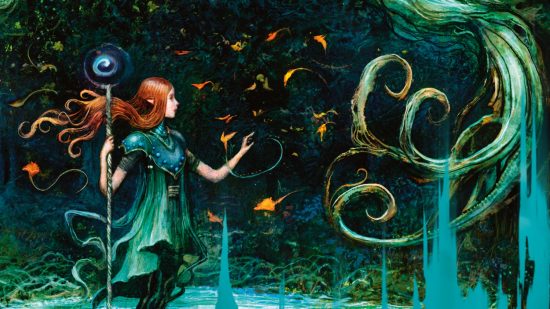
Circle of Dreams
Found in: Xanathar’s Guide to Everything
Out of all the subclasses for the Druid, the Circle of Dreams 5e is most lacking in any new offensive benefits, relying primarily on out-of-combat support options. Furthermore, the offerings presented are relatively meager, as you won’t be granted any new spells, and half of your new offerings are only viable outside of combat.
When you first choose the Circle of Dreams, you will gain the Balm of the Summer Court. This gives the Druid a pool of d6 dice which can be spent to heal an ally within a far-reaching 120-foot space. Having a bonus action heal that doesn’t require a spell slot can certainly be helpful in intense combat situations, and will most likely be the most beneficial aspect of this class.
The Hidden Paths utility ability gained at level ten allows the Druid to teleport 60 feet on their turn, as a bonus action, or send another willing creature 30 feet. There is undoubtedly potential with this to help set up advantageous battlefield positions; you could have your Druid move upwards of 90 feet in a single turn, for instance – or place your raging DnD Barbarian in an opportune spot to get advantage on their attacks.
The Circle of Dreams has some beneficial utility elements that could allow for fun situations, and may be a good pick for someone who wants to remain more of a ‘generalist’ Druid.
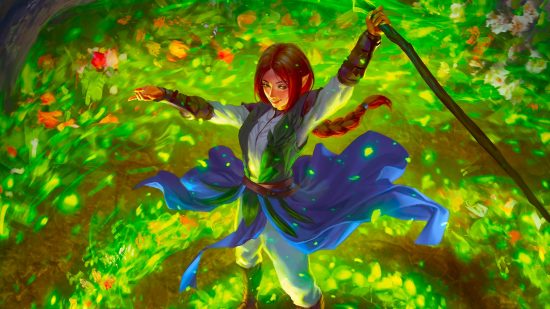
Circle of the Shepherd
Found in: Xanathar’s Guide to Everything
If summoning beasts and creatures to do your bidding is your thing, then the Circle of the Shepherd 5e may be the subclass for you. While other Circles focus on improving spellcasting or bolstering Wild Shape, the Shepherd makes your summoned fey and beast creatures hardier and grants some buffs to the party.
When you first embark down the path of this Circle, you’ll gain the ability to use a bonus action to summon various spirit totems that last for one minute. Each of the four totem options bestows benefits upon characters within its range, such as temporary hit points and healing, or advantage on ability checks.
The biggest downside to this, though, is that you can only use it once before having to take a long or short rest to get it back. The better level two ability you get, in our opinion, is Speech of the Woods, which lets you speak to animals and fey creatures. In our experience, much hilarity can ensue when you start talking to the animals.
You will have to wait until level six to see improvement in your summoned creatures, but it’s worth the investment. At levels six and ten, your creatures will gain an additional two extra health for each hit die they have; its natural attacks count as magical; and, if your summoned critters end their turn near a totem, they’ll regain health.
As a final ability, at level 14, when you are knocked unconscious or incapacitated, a level nine Conjure Animals spell will manifest, summoning four beasts of CR2 or lower, to loyally protect your downed body. If this happens while in a totem’s aura, you can see that you will suddenly have a pretty good furry wall of defenders.
The Circle of the Shepherd takes a while to get going, and can be a little lacking in the meantime – but for those that want to specialize in summoning, you may just find the benefits to be worth the wait.
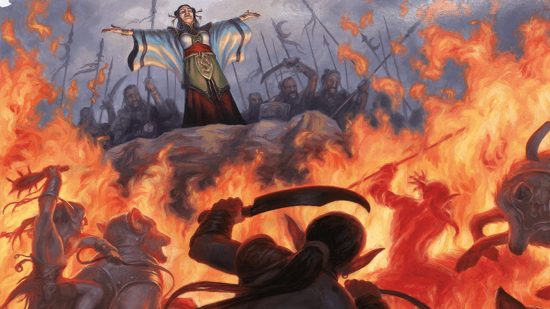
Circle of Wildfire
Found in: Tasha’s Cauldron of Everything
Rising from the ashes like a phoenix, Druids who take the Circle of Wildfire 5e subclass have a heavy emphasis on – you guessed it – fire. The benefits of this subclass range from fire spells to healing flame, but, most importantly, they include having an adorable fire corgi spirit pet.
Right away at level two, you gain the spells Burning Hands and Cure Wounds. Ahem… ‘handy’ spells, for sure – but the real star is your brand new Wildfire Spirit, a small elemental creature you can summon by expending one use of Wild Shape.
Your fiery pet can attack, teleport you and friends around, and, at higher levels, it improves the potency of fire and healing spells, adding a d8 to the total. It can also improve your range of spell coverage by allowing your spells to originate from the spirit’s location instead of your own.
In the ultimate act of sacrifice, once you hit level 14, should you fall unconscious while your wildfire pet is with you, you can have the poor thing die in your place, immediately restoring you to half your life total. Wildfire Spirits are truly the best.
The Circle of Wildfire is a wonderful choice for those players that love the idea of going on adventures with a faithful companion (and also pyromaniacs).
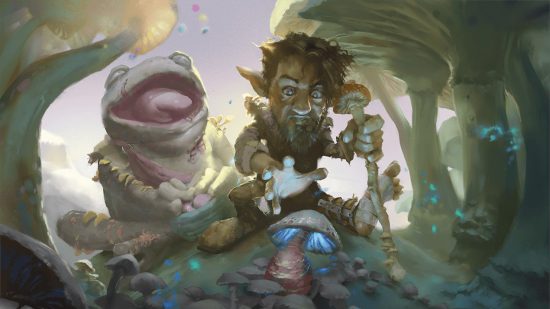
Circle of Spores
Found in: Tasha’s Cauldron of Everything
The Circle of Spores 5e subclass asks the age-old question: ‘what would a necromancer Druid be like?’. The spore Druid stands apart from other circles, mainly by dint of their fascination with decay, and by the way their skills all stem from a borderline-unsettling fascination and love of fungi and their spores. Many of the spells granted by this subclass revolve around plaguing foes with disease, and even allowing them to reanimate the dead around them.
Often, you’ll use your fungal magics to apply crippling status effects to key enemies, making them easier targets for your party’s heavy hitters. These same skills make your Spore Druid a less desirable target to engage in close combat. With abilities like Halo of Spores and Symbiotic Entity surrounding your character with a damaging fungal aura, enemies will have to think twice about whether you’re worth running up on.
As you gain in levels, you will be able to use your spores to reanimate the dead, with each body lasting an hour. These fungal DnD zombies can serve various purposes, from being meat shields for the Druid through to aggressively flanking enemies and allowing your other party members to gain an advantage on attacks.
The Circle of Spores is a decidedly unique route to take your Druid – and can certainly be a solid support choice for any party.
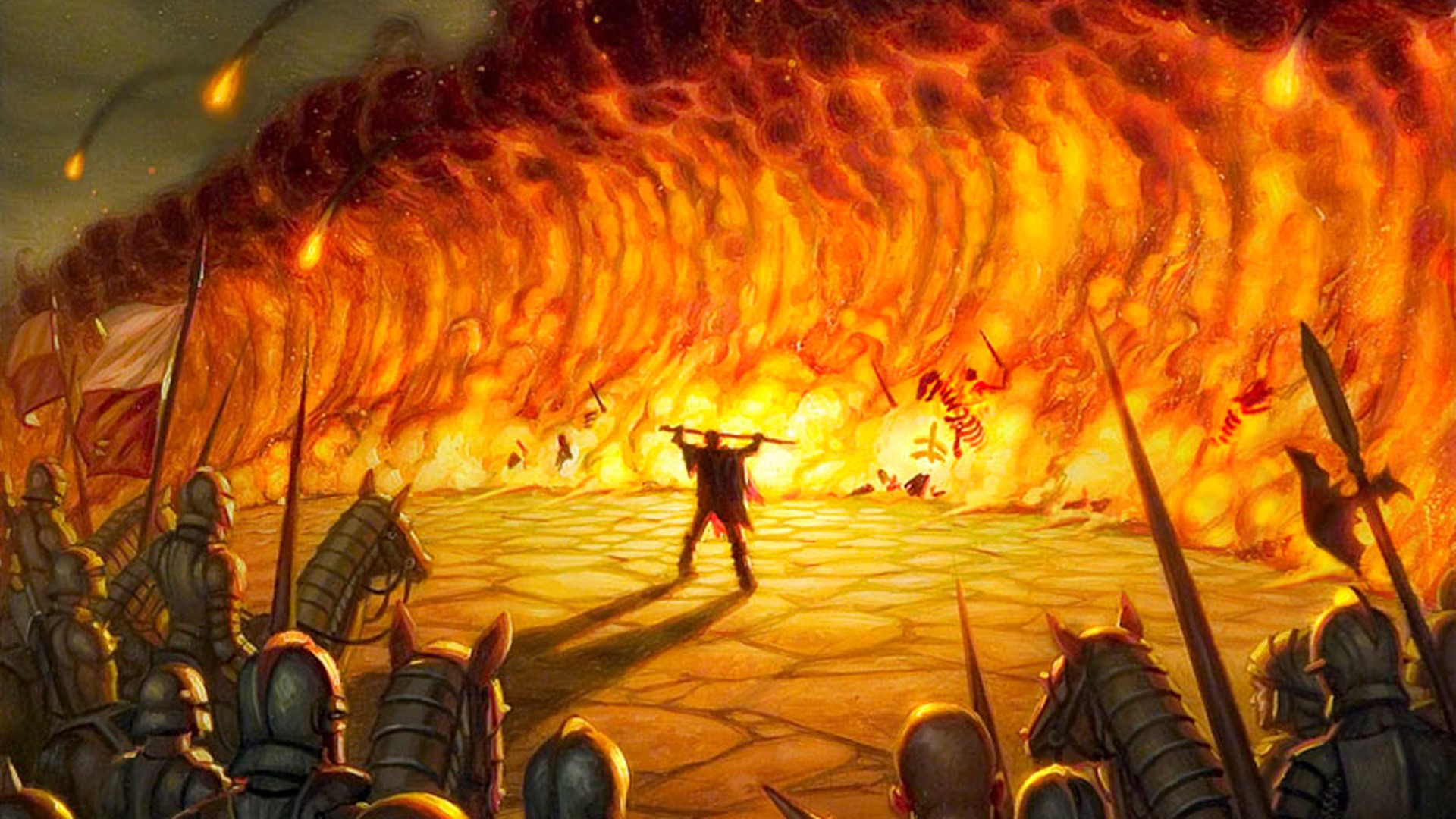
Druid spells
With high-damage spells like Fire Storm and Blight, healing spells like Cure Wounds and True Resurrection, and their beast summoning spells, the Druid can fit into many roles. What is particularly helpful is how quickly the Druid can adapt to different situations, too, requiring only a long rest to completely swap in-and-out any of their level spells.
Here are some staple spells that will be good to keep with you most of the time – but remember that it’s also an excellent plan to develop a few spell lists to choose between when you anticipate a big battle on the horizon.

Cantrips
Shillelagh
Primal Savagery
For a bit more damage, you can use this to do a melee spell attack against a creature within five feet of you, dealing 1d10 acid damage. What’s extra pleasant is that the damage bumps up to 2d10 at level five, 3d10 at level 11, and 4d10 at level 17!
Thorn Whip
A melee spell attack with a range of 30 feet, what this lacks in power compared with Primal Savagery, it makes up for with battlefield control. Thorn Whip’s signature effect is pulling a larger or smaller creature 10 feet towards you, but it still dishes out some damage too: 1d6 to start with, then 2d6 at level five, 3d6 at level 11, and 4d6 at level 17.
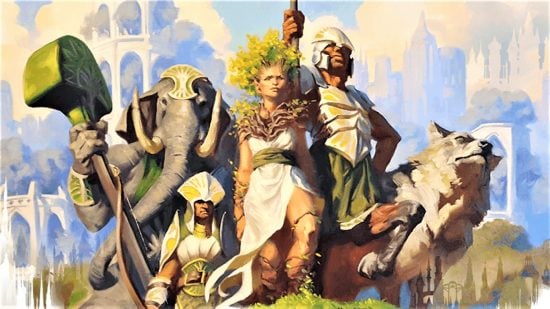
Level one
Cure Wounds
Healing is always good to have, and Cure Wounds is a Dungeons and Dragons mainstay. Being able to restore 1d8 plus your spell modifier to an ally (or more, depending on the subclass you pick) with the chance to up-cast later on, makes this a spell you should always have prepared.
Entangle
Have a mob of enemies bearing down on you and your party? Cast Entangle to try and restrain some, and slow the rest down. With a range of 90 feet, this can be a tremendous crowd control spell to keep wild combat encounters under control.
Faerie Fire
While this probably won’t benefit your Druid as much, Faerie Fire’s ability to grant attacks with an advantage on any creature that fails the saving throw can be game-changing. All your party’s melee and ranged fighters (and your summoned critters) will love you!
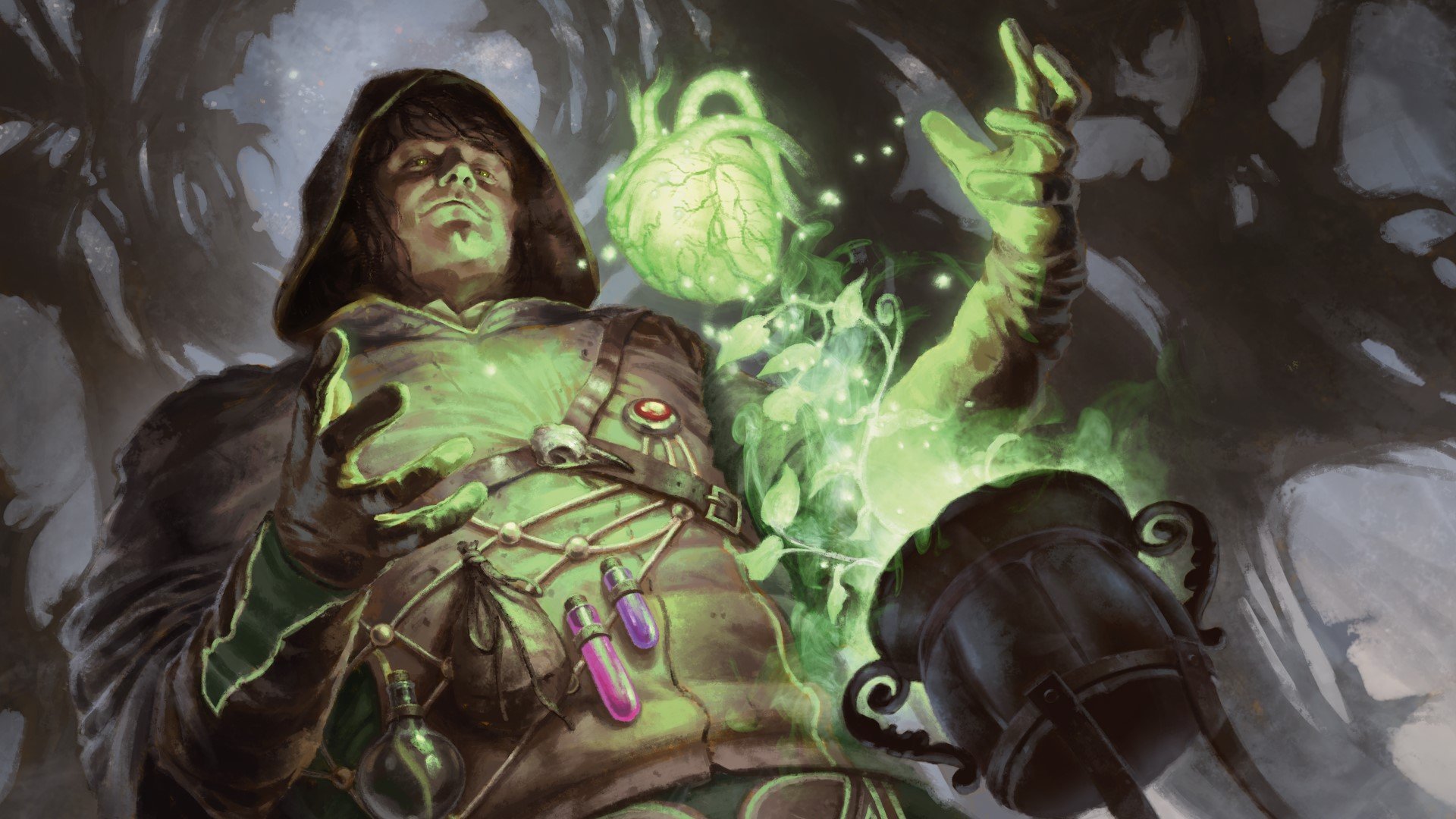
Level two
Summon Beast
One of the first summoning abilities the Druid can get, this is a must-have, especially if you are running a summoner-focused build like a Circle of the Shepherd. With several beast options, each with unique qualities, this spell is well worth the slot.
Lesser Restoration
If you know you are going to go up against opponents who can plague your party with status effects, Lesser Restoration will be a godsend. This simple spell can cure those that are blinded, deafened, paralyzed, or poisoned. While we wouldn’t say you need this on hand all the time, when you are preparing to go up against a big fight, it’s a real good spell to have ready.
Flaming Sphere
What’s cooler than a big ball of fire? A big ball of fire that you can run into people on your turn, that’s what! A classic fire spell that works beautifully, both as an attack and as a light source in dark-n-dreary dungeons.

Level three
Revivify
For the Druid that wants to play God. With Revivify, you can bring back from the dead anyone who has died within the last minute. That’s a whole ten turns worth of combat in which you can still fix someone’s fatal mistake!
Summon Fey / Conjure Animals
More summoning spells! You only need one or the other, so take whichever has the creatures you prefer. Conjure Animals does have more of a random element to it, though.
Speak with Plants
We get a certain amount of joy from making DMs come up with names, voices, and plot ideas on the fly, and this excels in that. There’s nothing quite like asking that suspicious-looking shrub about what it has seen recently, and actually hearing what it has to say for itself.
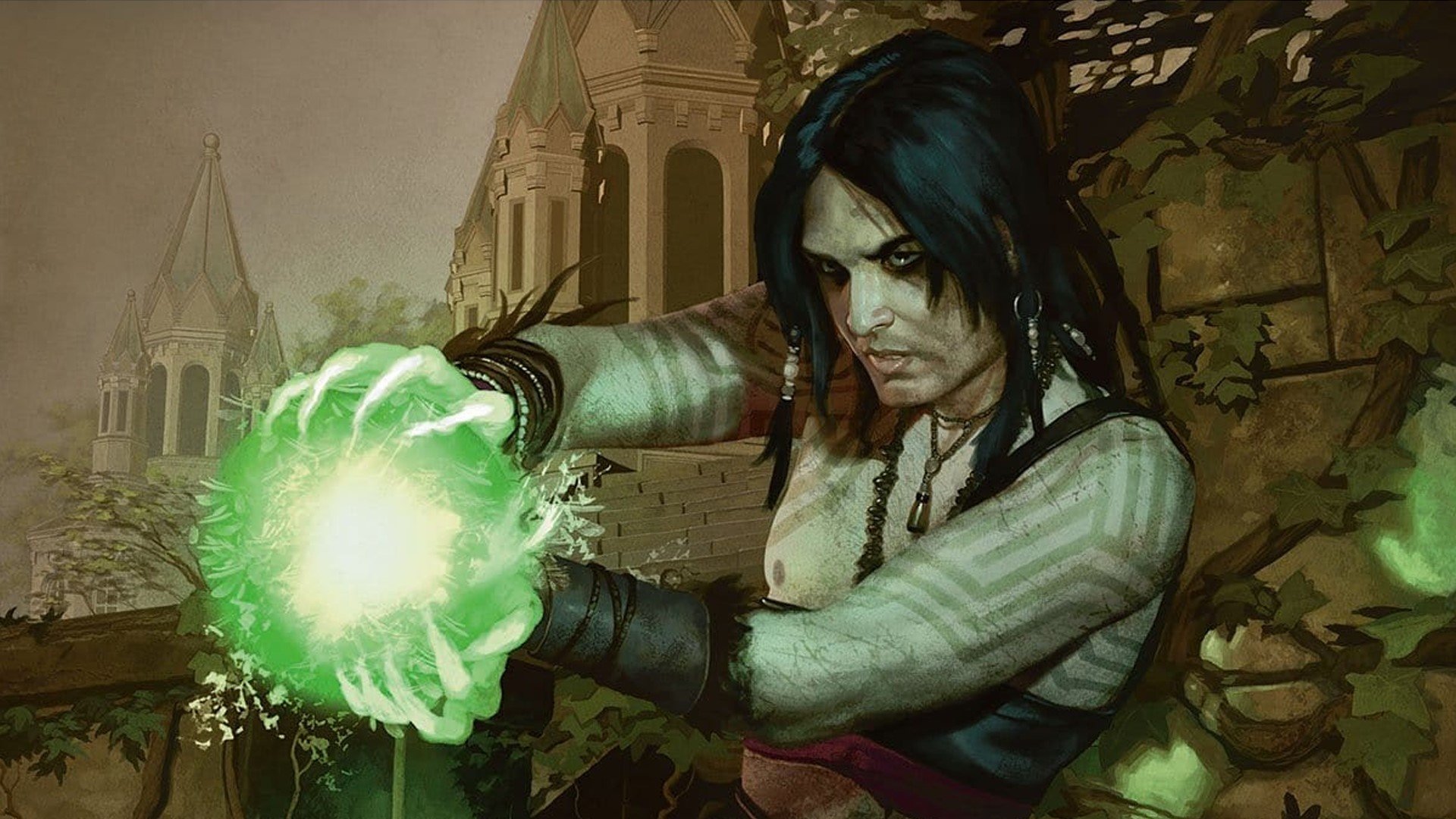
Level four
Elemental Bane
Removing an enemy’s elemental resistance, and then hitting them with that element, can be a massive boon during tough fights. On top of its initial effects, this spell applies an additional 2d6 damage of the given element type, the first time it takes damage of that type each turn.
It’s a huge force-multiplying benefit to your party members and their spells, or magic weapons. Or your fire corgi – for those of you that choose the Circle of Wildflame subclass.
Polymorph
There are few things more hilarious than turning a giant threat into a small rodent or other inconsequential vermin. Polymorph is a great way to remove an enemy from the field for a time, while other matters are attended to. As a surprise bonus, you can cast this on annoying party members, too.
Blight
Sometimes, you just need a really big stick to hit something hard with, and this is your metaphorical, necromancy-based stick. With a range of 30 feet, Blight is a spell that just deals a lot of damage to something. 8d8 damage hurts, regardless of how high-level a foe you are dealing with, and the ability to upcast and add additional 1d8 damage per higher level makes it even sweeter.
If you use it on a plant and it fails its saving throw, it just flat-out dies, too. That’ll teach those shrubs to lie to you.
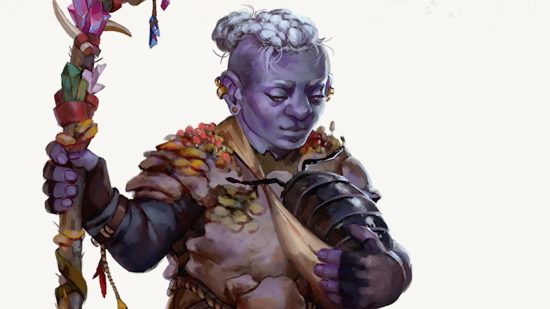
Level five
Geas
Have a shopkeep whose wares you want, but you don’t have the gold to pay for it? Use Geas! This handy spell will force a creature to do your bidding for 30 days, and more for an upcast. If they don’t want to do it, then they take 5d10 damage per day.
Greater Restoration
Much like its lesser counterpart, Greater Restoration is an excellent spell to have ready when expecting to go into a big fight. In addition to the previously mentioned remedies, this greater spell will also cure charm or petrification, curses, reductions in ability scores, and any effect that reduces a person’s max health – and it even removes a single point of exhaustion 5e. It’s like a full night’s sleep, but it only takes six seconds.
Scrying
Few spells are better at information gathering than the good ol’ Scry spell. Better than the binoculars the old neighbors down the street have, all you need is knowledge of someone or someplace, and you can attempt to magically spy on the target. Scry responsibly.
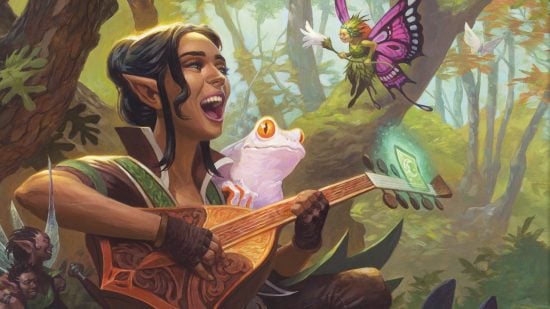
Level Six
Conjure Fey
Summon a fey on steroids. You can call upon a fey creature with a Challenge Rating of six or lower with this spell, with the upcast of one additional CR per spell level slot used to cast it.
Transport via Plants
Need to get from one side of the continent to the other? Transport via Plants may be the way to go.
Since you only need to have seen or touched the plant in question you want to teleport to, pair this with the Scrying spell, and you’ve got a great way to get to where you want to go. It also gives you a reason to touch every single tree, shrub, or flower you pass by on your adventure. You know, if that’s something that floats your boat.
Heal
You restore 70 health to a creature and cure it of blindness, deafness, and any disease. Simple and straight to the point, just like the spell’s name.
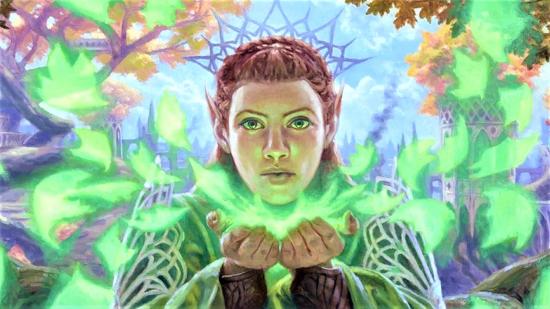
Level seven
Fire Storm
Fire. Fire everywhere. This massive spell is made up of giant swathes of fire that can extend out 100 feet, dealing 7d10 worth of fire damage to everything they touch. You can also choose to have the fire not affect plants, so all your tree friends will stay perfectly fine.
Plane Shift
Sometimes, you just need to go on vacation to the Nine Hells, and Plane Shift can take you and eight of your friends there. Or, if some enemy is bothering you, why not send them to another plane of existence too? They probably won’t come back for revenge.
Reverse Gravity
It is just as fun as it sounds. Create a giant 100-foot-wide and 100-foot-high space that causes anything inside to just float upwards and stay there. After a minute, or when you stop concentrating, everything falls right back down. Ouch.
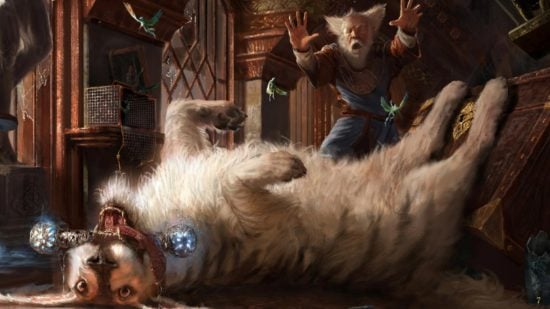
Level eight
Animal Shapes
Give your whole party a look at what they’re missing by not playing as a Druid, by changing any number of willing participants into animals. The rules are similar to that of your Wild Shape, in that the characters’ Strength, Dexterity, and Constitution stats are replaced by that of the animal they are turned into.
Each character’s changed form ends when the creature’s hit points are reduced to zero, and the carry-over damage applies to their base form. It may also be an excellent carnival attraction, turning folks into animals for a price – just a thought.
Feeblemind
Have a pesky magic caster that’s just ruining your party’s day? It sounds like a perfect time to bust out Feeblemind. Should the enemy fail its save against the spell, their Intelligence and Charisma drop to one, making them unable to cast spells, use items, or even understand languages.
This lasts for a whole month before they can try to make the save again. Otherwise, it just continues. They say the mind is a terrible thing to waste.
Tsunami
A great wall of water that even the lord of the seas, Leviathan, would be proud of. This massive wall of hydration initially hits enemies for 6d10 damage and pushes enemies away, which causes them to take an additional 5d10 damage. Then, on each of the following four turns, enemies still trapped in the wave take 4d10 damage, then 3d10 the next turn, and so on, until the wave disperses.
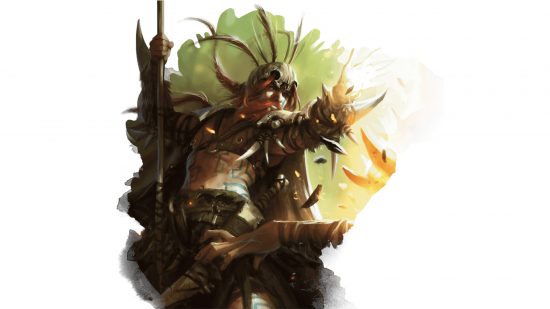
Level nine
Shapechange
The only ninth-level spell you need. Shapechange allows you to turn into any creature you have seen, minus undead or constructs, as long as their CR is lower than your level. You get the creature’s hit dice, and you get their skills and proficiencies in addition to your own.
Unfortunately, you don’t get the creature’s legendary actions, but it’s a small price to pay to be able to go from a DnD dragon, to a Beholder 5e, to a giant, and back, as often you want for a whole hour.

Best Druid races
Ever since Tasha’s Cauldron of Everything released, giving players more advanced ways of customizing their character, the concept of ‘best races’ for a class depends less on ability increases and more on proficiencies or skills that come with the race.
That said, here are a few races that have some handy features, or have access to a unique 5e feat that could be beneficial for your next Druid.
Shifter
The Shifter race can alter themselves to take on a more bestial appearance, while gaining temporary hit points and a special feature. One of the shifted appearances, the Wildhunt, gives you advantage on Wisdom checks. You can only shift once per long or short rest, but, since shifting can be done as a bonus action and lasts for a minute, it can be a clutch spell boost during combat.
Kalashtar
The two significant benefits that being a Kalashtar brings to a Druid are the advantage on Wisdom saving throws and the ability to speak telepathically to a creature within ten feet times your Druid level. That last feature can be incredibly helpful, since you technically can’t speak common or other DnD languages while in Wild Shape. This could make your Wild Shape a fantastic forward scout for the party.
Vedalken
The main benefit that being a Vedalken gets you as a Druid is having advantage on all Intelligence, Wisdom, and Charisma saving throws. You also will be able to choose one additional skill to become proficient in: Arcana, History, Investigation, Medicine, Performance, or Sleight of Hand – and get proficiency with a tool kit of your choice. This won’t provide offensive benefits, but advantage on your saves is always lovely to have.
Tiefling
This race recommendation is only suggested if you plan to run a Wildfire Druid, specifically because DnD Tieflings have access to the Flames of Phlegethos feat. This fire-focused feat will allow you to reroll any ones you roll when dishing out fire damage, and will cause you to be wreathed in flames whenever you cast a fire spell. This flaming shawl doesn’t just provide light, either – any creature that hits you with a melee attack will take 1d4 damage back.
For the latest Dungeons and Dragons news, here’s what DnD books are up next on the DnD release schedule. Or, for more rules explainers, here’s all you need to know about DnD stats and DnD damage types.












